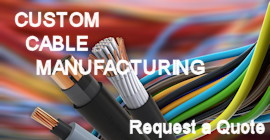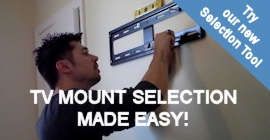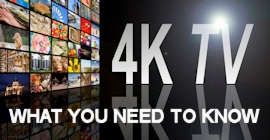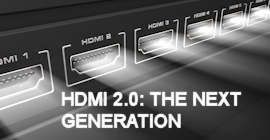Help > HDMI Switches
HDMI Switches: All You Need To Know
 An
HDMI Switch is used to toggle between multiples sources (such
as a BlueRay Player, Cable Box, or Satellite box) and connect to a
SINGLE HDTV. The use of a higher-grade cable when using a switch is highly recommended due to
the added resistence of connecting your devices through multiple ports.
A switch should not be confused with an
HDMI
SPLITTER (which is used to connect a single HDMI source devices to
multiple HDTVs).
An
HDMI Switch is used to toggle between multiples sources (such
as a BlueRay Player, Cable Box, or Satellite box) and connect to a
SINGLE HDTV. The use of a higher-grade cable when using a switch is highly recommended due to
the added resistence of connecting your devices through multiple ports.
A switch should not be confused with an
HDMI
SPLITTER (which is used to connect a single HDMI source devices to
multiple HDTVs).
The most common switch is a "4:1" - or "four to one". The most common use for such switch is to attach to mutiple source devices (such as a cable, BlueRay, Media Player, Gaming system, or satellite box to a single HDMI port located on an HDTV. Many first generation HDTV's had only one, or sometimes 2 HDMI ports. Nearly ALL of today's video devices output their video and audio via HDMI - and many times, you simply do not have enough HDMI ports on your TV. All of today's modern switches support most of the HDMI version 1.4A specifications.
Switches can generally be used up to 50ft from the switch location to the TV providing that high-quality HDMI cables are used. A maximum distance of 25ft from the source device to the switch is recommended. Longer distance from the switch to a TV can be obtained using our REDMERE HDMI Cables or Fiber Optic HDMI Cables. An HDMI cable is attached to the source device's (such as a cable box) OUTPUT port and the other end to the switch's INPUT port. An HDMI cables is then attached to each of the switch's OUTPUT ports running to the TV. Normally, a general duty 28AWG cable could be used for shorter distances. However, our FLEX EXTREME cables are recommended when using HDMI switches to minimize resistence.
Switch Limitations
The use of switches does have some caveats. Most HDMI switches now support auto-switching. The switch attempts to sense of a particular source device is turned ON, and auto-switches to that device. Unfortunately, many video devices (such as a satellite box) continue to output a video signal even when turned off. This "off" state can confuse a switch.
Signal converters (such as HDMI to VGA or HDMI to Component Video) may not properly work when with a switchr. The switch attempts to perform a "handshake" looking back at the source device (such as a BlueRay player), and ahead to your TV). When a converter is introduced after the switch en-route to the TV, the switch on MOST OCCASSIONS can not successfully determine the proposed resolution and signal type that the converter is programmed to output. Certain switches will however successfully work with certain converters, but we have not been able to find a definitive combination of such products that will always work properly together.
A switch can NOT be used in reverse.
Switches and 3D
If you are using a switch to send a signal first to a receiver, and then from the receiver to the TV, the 3D signal MAY not be supported. The switch (using HDCP digital content protection rules) first completes a "handshake" to each of the destination devices to determine what resolution and features are being used. This handshake information is then sent back to the switch to determine what resolution - and if a 3D image can be split successfully.
Capabilities
Switching an HDMI signal provides for the following support for all our current switch versions:
-
3D Support
-
All major audio formats are supported - DTS (HD) Master Audio 6 channel, LPCM (2 and 8 channel), Dolby Digital AC3, Dolby True HD, Dolby Digital Plus
-
Long distance support - The length of cable from the source device to the switch should be no longer than 25ft. The BEST possible HDMI cable should be used for this length. From the switch to a destination TV, the maximum recommend length is 50ft using conventional or REDMERE HIGH SPEED HDMI cables. Lengths beyond 50ft have been successful using our FIBER OPTIC HDMI cables






